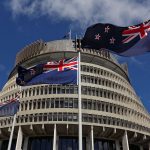A new tree-mapping technology, similar to Google Street View, is being used in Gore, New Zealand, to scan trees and assess their health.
Developed by New Zealand company Treetech and Singaporean business Greehill, the technology creates a 360-degree view of trees while checking for potential risks. This new method is faster and more accurate than traditional tree surveys.
A specially equipped car drives through the area at 39 km/h, using lasers and cameras to scan and photograph trees. The system can map up to 8,000 trees in a single day, providing important details such as species, size, and even a tree’s strength in strong winds. Artificial intelligence helps analyse the data and determine where more tree coverage is needed.
Treetech spokesperson Jak Harris called the technology a “game changer,” as it offers much more information than traditional surveys done by arborists on foot. Gore District Council’s parks manager, Keith McRobie, said the new survey replaces old spreadsheet-based methods, making the process more efficient.
Gore is the first place in New Zealand to use this technology, with Invercargill and Auckland councils also planning to adopt it. The system has already been used in major cities like Marseille, Prague, and Singapore. While it cannot directly detect diseases like kauri dieback, it can identify signs of tree decline early on.
McRobie believes the improved data will help make better decisions about tree care and preservation. “The information we’re getting is not only cheaper but also ten times more valuable,” he said.













I really wish heat won
I agree,The heat shouldve won